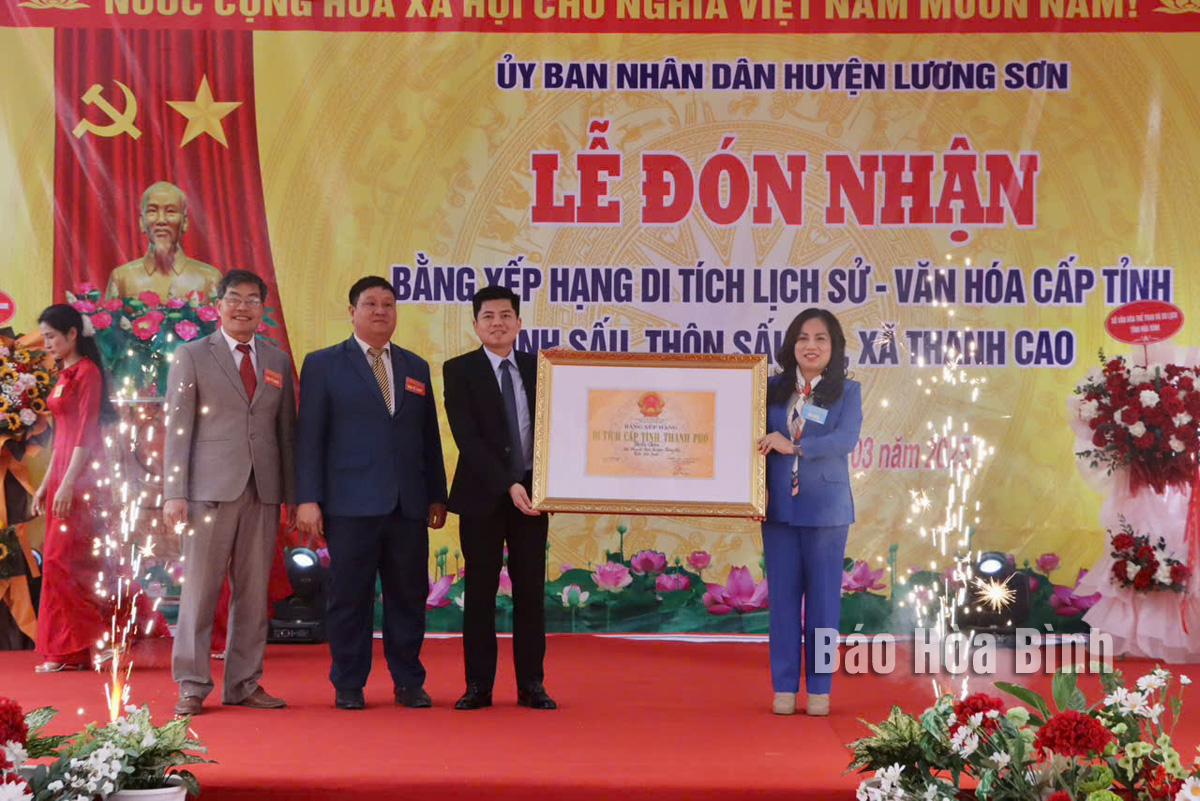



On behalf of the authorities, the leaders of the Department of Culture, Sports, and Tourism presented the certificate of provincial historical and cultural site ranking for Sau Communal House, located in Thanh Cao Commune, Luong Son District.
Sau Communal House is situated in Sau Ha Hamlet, Thanh Cao Commune, Luong Son District. Initially, the communal house was built using bamboo, thatch, and palm leaves, with a thatched roof. Over the time, the old communal house deteriorated, prompting the local people to contribute to its reconstruction. The new structure was built on a larger scale with durable ironwood, featuring the traditional "Dinh” (J-shaped) architectural style, consisting of a front hall and a rear sanctuary. Sau Communal House remained until 1950, when it was destroyed by the French colonial forces during a military raid, leaving only its foundation. All sacred artifacts were lost or scattered, and the cultural and religious activities ceased. After multiple restorations, the communal house has been rebuilt as it stands today.
According to the historical records and the imperial decrees preserved at the Institute of Social Science Information under the Vietnam Academy of Social Sciences, Sau Communal House was granted four royal decrees by the Nguyen Dynasty, honoring the deities worshipped at the site. These decrees were issued in the second year of Đong Khanh (1887), the third year of Duy Tan (1909), and twice in the ninth year of Khai Dinh (1924). Based on these records, Sau Communal House is dedicated to the three supreme-ranking deities of Tan Vien Mountain, including Tan Vien Son National Lord, Cao Son Great King, and Quy Minh Great King.
To preserve and promote the traditional cultural values while meeting the spiritual and cultural needs of the local community, the communal house was rebuilt through the socialized funding and the contributions from residents.
Sau Communal House Festivalis held annually on the5th day of the first lunar month, featuring the large-scale celebrations with unique rituals and traditional games. Recognizing its historical, cultural, and tourism significance, the People's Committee of Hoa Binh Province has officially designated Sau Communal House as aprovincial-level historical and cultural site.